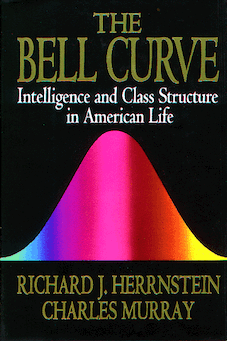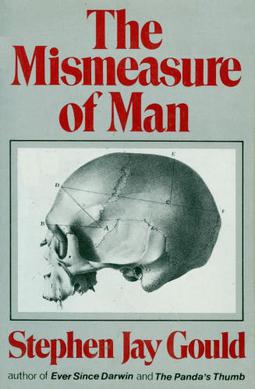The Flynn effect is the substantial and long-sustained increase in both fluid and crystallized intelligence test scores that were measured in many parts of the world over the 20th century. When intelligence quotient (IQ) tests are initially standardized using a sample of test-takers, by convention the average of the test results is set to 100 and their standard deviation is set to 15 or 16 IQ points. When IQ tests are revised, they are again standardized using a new sample of test-takers, usually born more recently than the first; the average result is set to 100. When the new test subjects take the older tests, in almost every case their average scores are significantly above 100.

An intelligence quotient (IQ) is a total score derived from a set of standardised tests or subtests designed to assess human intelligence. The abbreviation "IQ" was coined by the psychologist William Stern for the German term Intelligenzquotient, his term for a scoring method for intelligence tests at University of Breslau he advocated in a 1912 book.
John Philippe Rushton was a Canadian psychologist and author. He taught at the University of Western Ontario until the early 1990s, and became known to the general public during the 1980s and 1990s for research on race and intelligence, race and crime, and other purported racial correlations.
Discussions of race and intelligence – specifically, claims of differences in intelligence along racial lines – have appeared in both popular science and academic research since the modern concept of race was first introduced. With the inception of IQ testing in the early 20th century, differences in average test performance between racial groups were observed, though these differences have fluctuated and in many cases steadily decreased over time. Further complicating the issue, modern science has shown race to be a social construct rather than a biological reality, and intelligence has no undisputed definition. The validity of IQ testing as a metric for human intelligence is itself disputed. Today, the scientific consensus is that genetics does not explain differences in IQ test performance between groups, and that observed differences are environmental in origin.

The Bell Curve: Intelligence and Class Structure in American Life is a 1994 book by psychologist Richard J. Herrnstein and political scientist Charles Murray, in which the authors argue that human intelligence is substantially influenced by both inherited and environmental factors and that it is a better predictor of many personal outcomes, including financial income, job performance, birth out of wedlock, and involvement in crime than are an individual's parental socioeconomic status. They also argue that those with high intelligence, the "cognitive elite", are becoming separated from those of average and below-average intelligence, and that this separation is a source of social division within the United States.

The Mismeasure of Man is a 1981 book by paleontologist Stephen Jay Gould. The book is both a history and critique of the statistical methods and cultural motivations underlying biological determinism, the belief that "the social and economic differences between human groups—primarily races, classes, and sexes—arise from inherited, inborn distinctions and that society, in this sense, is an accurate reflection of biology".

Richard Lynn was a controversial English psychologist and self-described "scientific racist" who advocated for a genetic relationship between race and intelligence. He was a professor emeritus of psychology at Ulster University, but had the title withdrawn by the university in 2018. He was the editor-in-chief of Mankind Quarterly, which is commonly described as a white supremacist journal. Lynn was lecturer in psychology at the University of Exeter and professor of psychology at the Economic and Social Research Institute, Dublin, and at the University of Ulster at Coleraine.
The study of religiosity and intelligence explores the link between religiosity and intelligence or educational level. Religiosity and intelligence are both complex topics that include diverse variables, and the interactions among those variables are not always well understood. For instance, intelligence is often defined differently by different researchers; also, all scores from intelligence tests are only estimates of intelligence, because one cannot achieve concrete measurements of intelligence due to the concept’s abstract nature. Religiosity is also complex, in that it involves wide variations of interactions of religious beliefs, practices, behaviors, and affiliations, across a diverse array of cultures.
Tatu Vanhanen was a Finnish political scientist and sociologist. He was a professor of political science at the University of Tampere in Tampere, Finland. Vanhanen was a coauthor with Richard Lynn of IQ and the Wealth of Nations (2002) and IQ and Global Inequality (2006), and author of Ethnic Conflicts Explained by Ethnic Nepotism (1999).
The Minnesota Transracial Adoption Study examined the IQ test scores of 130 black or interracial children adopted by advantaged white families. The aim of the study was to determine the contribution of environmental and genetic factors to the poor performance of black children on IQ tests as compared to white children. The initial study was published in 1976 by Sandra Scarr and Richard A. Weinberg. A follow-up study was published in 1992 by Richard Weinberg, Sandra Scarr and Irwin D. Waldman. Another related study investigating social adjustment in a subsample of the adopted black children was published in 1996. The 1992 follow-up study found that "social environment maintains a dominant role in determining the average IQ level of black and interracial children and that both social and genetic variables contribute to individual variations among them."
Research on the heritability of IQ inquires into the degree of variation in IQ within a population that is due to genetic variation between individuals in that population. There has been significant controversy in the academic community about the heritability of IQ since research on the issue began in the late nineteenth century. Intelligence in the normal range is a polygenic trait, meaning that it is influenced by more than one gene, and in the case of intelligence at least 500 genes. Further, explaining the similarity in IQ of closely related persons requires careful study because environmental factors may be correlated with genetic factors.

Race Differences in Intelligence: An Evolutionary Analysis is a 2006 book by controversial race and intelligence writer Richard Lynn. The book reviews selected literature on IQ testing and argues that genetic racial differences exist, with a discussion of the causes and consequences. Reviews of the book fault the selection of data used, the methodology, and the conclusions drawn from the data, resulting in criticism that it is "the sort of book that gives IQ testing a bad name."

IQ and Global Inequality is a 2006 book by psychologist Richard Lynn and political scientist Tatu Vanhanen. IQ and Global Inequality is follow-up to their 2002 book IQ and the Wealth of Nations, an expansion of the argument that international differences in current economic development are due in part to differences in average national intelligence as indicated by national IQ estimates, and a response to critics. The book was published by Washington Summit Publishers, a white nationalist and eugenicist publishing group.
The history of the race and intelligence controversy concerns the historical development of a debate about possible explanations of group differences encountered in the study of race and intelligence. Since the beginning of IQ testing around the time of World War I, there have been observed differences between the average scores of different population groups, and there have been debates over whether this is mainly due to environmental and cultural factors, or mainly due to some as yet undiscovered genetic factor, or whether such a dichotomy between environmental and genetic factors is the appropriate framing of the debate. Today, the scientific consensus is that genetics does not explain differences in IQ test performance between racial groups.
The relationship between nations and IQ is a controversial area of study concerning differences between nations in average intelligence test scores, their possible causes, and their correlation with measures of social well-being and economic prosperity.

Bias in Mental Testing is a book by Arthur Jensen about bias in IQ tests.
Garett Jones is an American economist and author. His research pertains to the fields of macroeconomics, monetary policy, IQ in relation to productivity, short-term business cycles, and economic development. He is an associate professor at George Mason University and the BB&T Professor for the Study of Capitalism at the Mercatus Center.
Jason Matthew Richwine is an American political commentator and author. He is best known for his doctoral dissertation titled "IQ and Immigration Policy," and a report he co-authored for The Heritage Foundation on the economic costs of illegal immigration to the United States which concluded that passing the Border Security, Economic Opportunity, and Immigration Modernization Act of 2013 would cost taxpayers more than $6 trillion.
Heiner Rindermann is a German psychologist and educational researcher.








